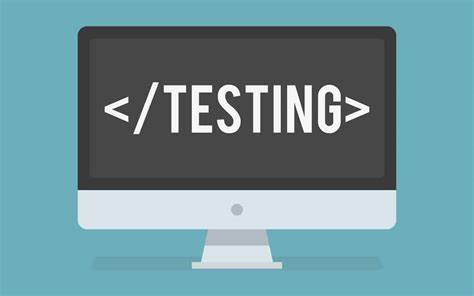Difference Between UAT and E2E Testing
 Aditya Tomar
Aditya TomarTable of contents
- Introduction
- What is UAT Testing?
- What is E2E Testing?
- How does E2E Testing work?
- Differences Between UAT and E2E Testing
- Conclusion
- Frequently Asked Question's
- How do UAT and E2E testing help ensure software quality?
- Why is UAT necessary if E2E testing covers the entire software system?
- How do UAT and E2E testing differ in their testing environments?
- 4. What roles do business users and testers play in UAT and E2E testing?
- 5. Can UAT and E2E testing be automated?

Hey everyone, I wanted to talk about two important types of testing: end to end testing vs uat. They're both about making sure software works well, but they have some differences. Let's break it down!
Introduction
UAT and E2E testing are two important types of software testing that verify a system meets requirements from an end-user perspective. Though similar in some respects, there are key differences between UAT and E2E testing.
What is UAT Testing?
User Acceptance Testing, or UAT for short, is like the final test before software goes live. It's done by the folks who will be using the software – or people who represent them – to see if it works the way it's supposed to.
Purpose of UAT Testing
UAT testing is conducted by the end users or their representatives to determine if a system meets the business requirements and is ready to be deployed in a production environment. The primary goal of UAT testing is to evaluate the system's usability, reliability and compliance from an end user's point of view.
How does UAT work?
When we do UAT, we first come up with different scenarios or situations that might happen when someone uses the software. Then, we test those scenarios in a special testing environment. This environment is like a copy of the real world, but it's just for testing.
We want to try out everything that users will see and do in the software. If we find any issues – like buttons that don't work or pages that look weird – we report them to the developers so they can fix them.
Once everything looks good and everyone agrees that the software is ready, we give it the green light. We say it's passed UAT and is good to go live!
In short, the UAT testing process typically involves:
Defining test scenarios based on business requirements
Performing tests on a test environment that mimics production
Testing all aspects of the system the end users will interact with
Identifying defects and gaps in functionality
Providing sign-off to indicate the system is ready for production
What is E2E Testing?
Now, let's talk about E2E testing. This type of testing is a bit different from UAT. While UAT focuses on making sure the software meets user needs, E2E testing looks at the big picture – how all the different parts of the software work together.
Purpose of E2E Testing
The main goal of E2E testing is to ensure that the software functions correctly from start to finish. We want to make sure that when someone uses the software, everything works the way it's supposed to – from the moment they open the app to when they finish their task.
How does E2E Testing work?
When we do E2E testing, we come up with different tests that cover all the different parts of the software. We want to make sure that everything works together smoothly – like how different parts of a machine work together to make it run.
We also check how the software interacts with other programs or systems it might need to work with. We want to make sure that data flows correctly between different parts of the software and that everything happens without any hiccups.
If we find any issues during E2E testing – like parts of the software that don't work together or data that gets lost along the way – we report them to the developers so they can fix them.
So we can say that the E2E testing process typically involves:
Defining test scenarios that exercise all parts of the system
Testing the system from initial input to final output
Testing interactions between system components and external interfaces
Ensuring data and requests flow correctly between components
Identifying defects in system integration and E2E workflows
Differences Between UAT and E2E Testing
Now that we understand end to end testing vs uat better, let's look at some key differences between the two:
What are requirements?
UAT focuses on verifying the system meets business requirements from an end user's perspective.
E2E testing focuses on verifying system integration and E2E workflows.
Who does the testing?
UAT is conducted by end users or their representatives.
E2E testing is usually performed by testers and developers.
What we're testing?
UAT tests functionality that end users will interact with directly.
E2E tests the system as a whole, including components end users do not see.
Where do we test?
UAT requires a test environment that closely mimics production.
E2E testing can be performed on lower environments that do not need to mimic production exactly.
Why we test?
UAT aims to identify usability issues and gaps in requirements fulfillment.
It provides sign-off to indicate the system is ready for production from an end-user perspective.
E2E testing aims to identify defects in system integration and E2E workflows. It provides information to developers about defects in system integration.
Conclusion
In conclusion, both end to end testing vs uat are crucial steps in ensuring software quality. UAT focuses on making sure the software meets the needs of its users, while E2E testing looks at how all the different parts of the software work together.
By using both UAT and E2E testing, we can catch any issues before the software goes live and ensure a smooth user experience. So next time you're testing software, remember the importance of both UAT and E2E testing – they're the final checkpoints before launch!
Thank You folks for reading. If you found this blog post helpful, please consider sharing it with others who might benefit.
Connect with me on Twitter, LinkedIn, Github.
Frequently Asked Question's
How do UAT and E2E testing help ensure software quality?
UAT and E2E testing are both crucial steps in the software testing process. UAT helps catch any issues related to user needs and usability, while E2E testing ensures that all components of the software function correctly together, ultimately leading to a smoother user experience and higher software quality.
Why is UAT necessary if E2E testing covers the entire software system?
While E2E testing ensures that all components of the software function together, UAT specifically validates if the software aligns with end-user requirements and expectations, providing a final check from the user's perspective.
How do UAT and E2E testing differ in their testing environments?
UAT is typically done in a special testing environment that mimics the production environment but is separate from it. This allows for testing in a controlled setting before the software is released to users. E2E testing can be performed in various environments, depending on what needs to be tested, but it also often occurs in environments that are separate from the production environment
4. What roles do business users and testers play in UAT and E2E testing?
In UAT, business users validate whether the software meets their functional and business needs. In E2E testing, QA engineers verify the system's behavior across all integrated components. Keploy helps both groups by providing automatically generated tests from real interactions, making validation faster and more accurate.
5. Can UAT and E2E testing be automated?
E2E testing is often automated using tools like Selenium, Cypress, or Keploy to simulate real user flows. UAT is usually manual, but Keploy bridges the gap by recording real user sessions and replaying them, turning manual scenarios into automated tests—greatly reducing manual testing time while preserving realism.
Subscribe to my newsletter
Read articles from Aditya Tomar directly inside your inbox. Subscribe to the newsletter, and don't miss out.
Written by

Aditya Tomar
Aditya Tomar
I am a developer from India and I am continuously learning and sharing knowledge with the community.